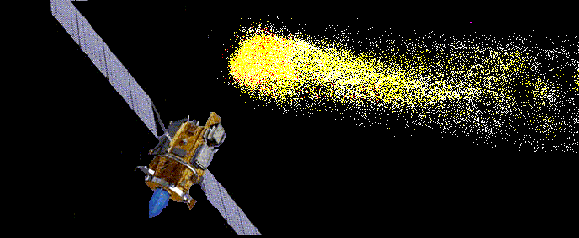

Generally, a spacecraft is launched with huge rockets into a certain trajectory, or path, and it continues on that that path. Often the smaller rockets that are attached to the spacecraft are not large enough to change that initial push significantly. Spacecraft traveling in one direction have a hard time turning around and going in another. Sometimes a spacecraft can use the gravity of a planet or moon for an orbit or swingby and change its direction that way.
Other than that, the course is not changed in large ways, just adjusted or corrected. If a course correction is needed, the spacecraft will fire small attitude rockets to change the direction it is pointing. After that, the main thruster can give the rocket a push in the new direction. In order to do this, the location and heading of the spacecraft must be known perfectly.
Generally, the spacecraft takes readings and send them down to ground control and then ground control radios up a command sequence about how to change the course. On spacecraft like DS1, though, AutoNav and Remote Agent can do some of these tasks automatically.
Ask any question below to learn about how spacecraft change course.
![]()
Why does DS1 get off course?
What is a course correction?
What is AutoNav?
How do we know where a spacecraft is?
Do small errors in space navigation matter?
What is a remote agent?
How do scientists know what the path of an object in space will be?
How often does DS1 communicate with a ground station?
How does NASA communicate with spacecraft?
How does NASA run space missions?
![]()
How does DS1 do a course correction?
When does DS1 do a course correction?
What would happen if DS1 collided with an object in space?
How do spacecraft use an orbit to move from planet to planet?
What is a flyby?
What is attitude control?
How is NASA overseeing the DS1 mission?
![]()